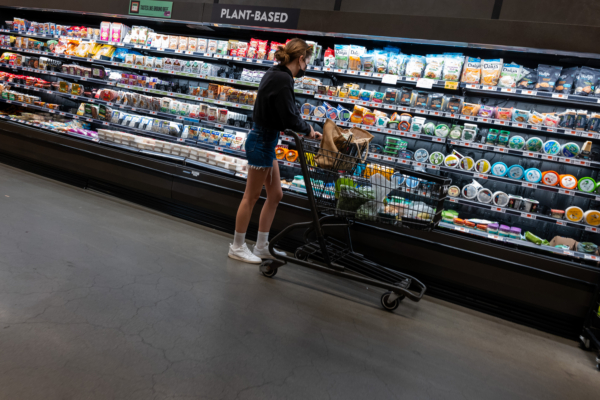In the United States, inflation continues to cool down, with the Department of Labor reporting a 2.9% year-on-year increase in the Consumer Price Index (CPI) for July, below the market’s expectation of 3%. It seems that inflation is now under control.
In 2022, as the economy was recovering from the pandemic, prices surged by 9%. Currently, prices are gradually stabilizing, with the rate of increase not as rapid as before, but also not decreasing. Since the pandemic, the prices of food and groceries have risen by 20%.
Americans have a strong penchant for consumption, which has become a key pillar of the U.S. economy. Despite the unstable global environment in recent years, people have faced the pandemic, foreign wars, social unrest, wildfires, floods, and high prices. However, none of these challenges have deterred Americans from shopping.
Consumption has been a driving force behind the U.S. economy’s recovery from the pandemic-induced recession. Even without government subsidies and with rising interest rates raising borrowing costs, Americans have shown little signs of slowing down their spending.
From June to July, retail sales in the United States increased by 1%, a surprising figure compared to the 0.3% predicted by economists.
According to CNN, Kathy Bostjancic, Chief Economist at the Mutual Insurance Company, mentioned that Americans continue to spend heavily but are increasingly focusing on budget control and looking for bargains.
Luxury brands are feeling the pressure, while The Home Depot’s sales are sluggish, and Walmart and Costco are thriving.
In terms of employment, in a high-interest-rate environment, starting a business is not easy, and creating job opportunities is more challenging. The U.S. unemployment rate rose in July, but the number of initial jobless claims continued to decline for the second consecutive week, reaching its lowest level since early July.
According to data released by the Department of Labor on August 15, in the week ending August 10, the number of initial jobless claims decreased by 7,000 to 227,000, below the predicted value of 235,000.
Although the inflation rate is cooling down, housing costs are 5.1% higher compared to a year ago, accounting for nearly 90% of the overall inflation growth.
Housing costs have been a major driving force behind the U.S. inflation in the past three years. According to the National Association of Realtors, the current median home price is $427,000, reaching a historic high and increasing by over 20% compared to three years ago.
CNN reports that during the outbreak of the pandemic, reduced housing supply led to increased demand, consequently driving up housing prices. Subsequently, the Fed’s rate hikes to combat inflation also raised mortgage rates – from under 3% in 2020 to a peak of 7.2% this year.
However, mortgage rates are now declining to around 6.5%, and housing supply is increasing. But the situation remains challenging. In June, Bank of America stated that home prices will remain high, even continue to rise, and housing shortages will persist. Even if the Fed cuts interest rates, mortgage rates may not decrease significantly.
Economists at Bank of America warned that the U.S. real estate market is in distress, and this situation may not improve until before 2026.
(Reference: CNN report)

